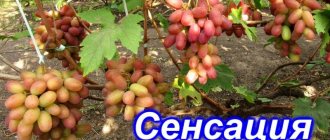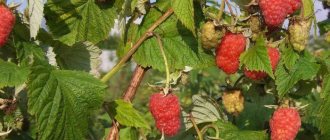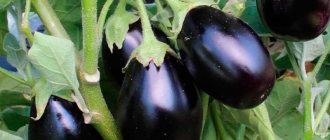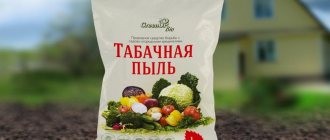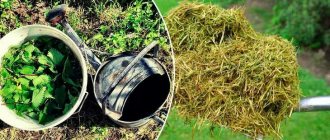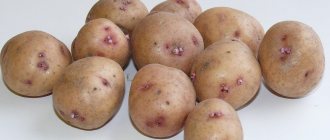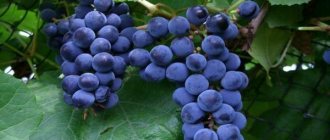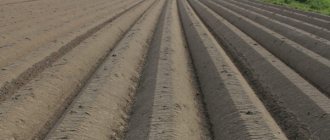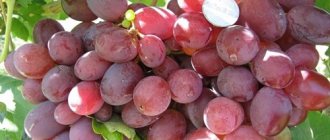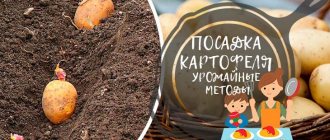Category: Growing and care Reading time: 10 min · Views: 1,408
For active growth, strong immunity and rich fruiting, all plants need additional nutrition. Adult crops that have reached the age of 3 or more years especially need useful substances. The same rule applies to grapes. When and what kind of grape feeding is needed, read this article.
Introduction
The soil on personal plots is often depleted.
The reason for this is simple - for many years, plants were planted in the same place, and nutrients were added to the soil in a limited volume. Therefore, what grows on personal land requires feeding. Grapes are no exception. Today we’ll talk about how to supply it with nutrients to ensure stable growth and abundant fruiting.
Foliar feeding
The vine is nourished not only through the root system, but also through the leaves. For full growth and fruiting of the crop, it is useful to combine root and foliar feeding.
Compositions for foliar feeding:
- "Plantafol".
- "Kemira".
- "Novofet."
- "Aquarin".
Organic infusions:
- ash;
- herbs;
- garlic (nutritional feeding + protection against parasites);
- tobacco (nutritional supplement + anti-fungal and viral agent).
Foliar feeding is carried out according to a certain scheme:
- Spray the plant with the active composition for the first time 5 days before the flowers open.
- The second treatment is carried out 10 days after the start of the flowering period.
- The vines are treated with nutritional compounds for the third time 2 weeks after the second foliar feeding.
- The final foliar feeding is carried out half a month before the preliminary period of fruit ripening.
Foliar feeding is carried out only in the early morning or late evening. If you treat plants with active compounds during the day, the leaves may get sunburn.
Properly organized feeding of grapes is the key to the growth of a healthy and strong vine, which will soon produce a good harvest.
Theoretical basis
Plants are unique living organisms in their own way. After all, they can create organic substances from inorganic substances. The basis of their metabolism is 3 chemical elements:
- Nitrogen. Stimulates chlorophyll production and growth. Increases the total amount of green mass. In case of deficiency, photosynthesis suffers, the plant turns yellow and grows poorly. With a constant shortage, death is possible.
- Potassium. Plays an important role at the stage of flowering and fruit ripening. However, microelement deficiency leads to serious problems even when the plant does not bloom or bear fruit - the leaves begin to darken from the veins to the edges and gradually die.
- Phosphorus. The substance is indispensable in the initial stages of plant development - from the pipping of a sprout from a seed to the first few weeks of life. Promotes correct and timely formation of the root system. If there is a lack of substance, the leaves also fall off.
Of the listed substances, the grapevine needs potassium the most. If you compare its consumption with the consumption of nitrogen and phosphorus, you can see that it is several times higher.
Plants also need other microelements, almost the entire periodic table. Here are just a few of them:
Zinc
Magnesium
Calcium
Copper
Sulfur
Also, be sure to carry organic fertilizers (mainly cow manure). This is done for two reasons:
- there are no organic chemical compounds in mineral fertilizers;
- If mineral fertilizers are in excess, they can accumulate in fruits; this is impossible with organic fertilizers.
Methods and types of feeding
There are foliar feeding, which is carried out along the leaf, and root feeding.
With the root type of feeding, the bush receives nutrition for a long time through the root system and distributes it throughout the green mass from the roots to the tips of the mustache.
In the case of foliar feeding, the grapes receive nutrition immediately through the leaves. But the duration of such feeding is short.
As a result of understanding these processes, it is necessary to combine these two methods. It is also possible to carry out both feedings at the same time.
Nutrition through foliar feeding arrives within an hour and lasts about a day. After this, root fertilizer begins to have an effect over a longer period of time.
The main feeding at the stage of ripening of bunches is the root method
Foliar feeding
It cannot replace root feeding of grapes. But at the same time it is a good additional feeding. Helps increase yield and influences good vine growth.
As a rule, foliar application of fertilizers is carried out in the evening and in calm weather without wind. As a result, there is no evaporation and the solution settles perfectly and envelops the sheet. First of all, this affects the likelihood of obtaining the substance used.
For your information!!! The first feeding should be done before the grapes bloom, about 10 days. If you have isabella varieties on your site, then watch them. As a rule, they begin to bloom earlier than everyone else. Then pick up a sprayer and start treating all the bushes.
What preparations do I use for foliar feeding of grapes:
- boron;
- manganese;
- molybdenum;
- zinc;
- nitrogen;
- cobalt;
- phosphorus;
- copper;
- potassium.
In addition, popular and commonly used vitamin complex formulations can be used. These include: Plantafol, Novofert. Valagro, Kemira, Aquarin,
Spraying is done on the foliage. To do this, use a weakly concentrated solution. If the concentration is exceeded, the result can be a burn of foliage.
Important!!! You only need to spray the foliage and vines, but you don’t need to process the berries. Because It is the shoots and foliage that absorb all the mineral supplements.
You can spray with complexes containing both macro- and microelements. However, you can also use simple complexes that contain a standard set of iron, potassium, boron, phosphorus, etc. Or try making a folk fertilizer by mixing an infusion of ash and a fermented infusion of various herbs “green fertilizer”.
During the season, it is advisable to do no more than three leaf feedings with complex feedings.
Avoid nitrogen supplements during this period, use only phosphorus-potassium supplements. As a result, you will protect the grapes from cracking, increase yield and help the berries to be larger and ripen faster.
We recommend reading: How to properly prune an old neglected grape bush
Root feeding
Grapes need potassium and phosphorus. Potassium promotes, first of all, the rapid ripening of berries, increases the resistance of shoots to diseases, as well as the accumulation of sugar in the grapes, so that the berries are sweet.
Phosphorus has a beneficial effect on root development and improves metabolism. For this, fertilizers such as potassium sulfate or potassium sulfate and superphosphate are suitable.
It should be diluted according to the instructions and applied only after watering. First of all, this is necessary for deeper penetration of nutrition to the roots.
Feeding in the early stages of development
Immediately after planting the grapevine, it should be watered with a combination solution of:
Potassium nitrate
Nitrogen nitrate
Phosphate
Since grapes love potassium most of all, this is what they need most. Based on a ten-liter bucket we put:
- 3 tablespoons of potassium nitrate;
- 2 tablespoons of nitrogen nitrate;
- 2.5 tablespoons of phosphates.
Mix all this until completely dissolved and water the vine. Phosphorus and potassium will have a general strengthening effect, and thanks to nitrogen, the grapes will begin to grow quite quickly. This is very important in the early stages of plant development.
To make fertilizers better absorbed, you can add a little succinic acid to their solution. The substance can be found at any gardening store. It's inexpensive.
Which fertilizer does he prefer?
Grapes love fertilizer mixtures and complex preparations, but in reasonable quantities. The principle: “the more the better,” in this case will be harmful.
Not only the type of substance introduced is of great importance, but also the method of procedure. Not every fertilizer can be applied at the root or used as foliar feeding.
Minerals
After planting seedlings in a permanent place of growth, the plant begins to actively absorb minerals, organic compounds, and microelements for growth and development.
Therefore, additional feeding will be required quite quickly. Depending on the season, grapes will need phosphorus or potassium, calcium or copper.
In order not to add microelements separately, you can use special complex products or organic matter. Before the procedure, the composition of the substance is studied. This will help clarify the presence of the element and its percentage in the fertilizer.
Boric acid
Boric acid contains more boron. It is this element that is not enough in the soil. Once applied, it washes out quickly. Therefore, it is recommended to fertilize in the fall, when the fruits begin to ripen.
Boric acid provides:
- rapid ripening of berries;
- filling the bunch with sweetness and juice;
- full development of the bush for next year.
Iron sulfate
The product is more used as protection against pests and diseases. But this does not prevent it from being used occasionally as fertilizer. Iron sulfate contains a substance necessary for strengthening the immunity of grapes - iron. With its help, the following happens:
- destruction of lichen;
- repelling small insects;
- elimination of pest larvae and their eggs;
- prevention of the development of fungal diseases such as oidium, mildew, anthracnose, necrosis, all types of mildew and rot;
- disinfection and treatment of wounds and injuries;
- providing the soil with the necessary iron, which will help speed up photosynthesis.
How to fertilize grapes depending on the season
Depending on the time of year, feeding the grapevine will differ. Let's figure out what the plant needs in what season.
Spring
To restore the plant's strength after winter and subsequent flowering, it requires a lot of nutrients. Therefore, in the spring, the grapes must be helped - otherwise you will not get a big harvest.
For rapid leaf growth, the vine must be saturated with nitrogen. This can be done in two ways:
Nitrogen nitrate solution
Organic fertilizers
The first method is as simple and cheap as possible - the grapes are watered with a nitrate solution every 3-4 weeks.
There are several nuances. Firstly, nitrogen nitrate causes acidification of the soil, which will then have to be dealt with. Secondly, if you overdo the dosage, it will accumulate in various parts of the plant (including fruits).
The second method is more difficult, but safer. The plant will take up nutrients on its own. Small holes are dug around the grapes and placed in them:
- cow dung;
- ash;
- urea
When burying manure you need to be very careful and careful. Otherwise, you can damage the root system.
The method is safer, as it does not cause the accumulation of nitrates in the plant. But it takes more time - nutrients from organic matter are absorbed much more slowly.
In spring, the plant is fed twice:
- After the first treatment (mid-April, when the air temperature exceeded 15o C).
- At the end of May.
If the vine grows poorly, is too weak, or is sick, you can carry out another feeding - in mid-May.
Summer
In summer, grapes need less fertilizer, but you shouldn’t completely give up feeding. After all, for flowering and full ripening of fruits, grapes need potassium and other microelements.
The following options are suitable:
A weak solution of potassium nitrate with phosphates
Cow dung soaked in water
Ash solution
You can also feed it with chicken droppings. But here you need to be extremely careful:
- chicken droppings are caustic and can burn the roots, so you need to choose the right dosage;
- an overdose of nitrogen is possible, and, as a result, too rapid growth of green mass.
Also in the summer, grape leaves are sprayed with a weak urea solution. Spray the grapes twice during the summer; more frequent treatment is not necessary:
- at the bud ripening phase;
- immediately after flowering.
It is better to do this when the sun goes down (after 20-00). Otherwise, droplets of solution remaining on the leaves will refract the sun's rays like lenses. This will cause burns and the plant will hurt.
To supply the plant with copper, zinc, sulfur and other nutrients, you can use complex fertilizers, which are sold at any gardening store.
Autumn
Autumn feeding is practically no different from summer feeding. True, there are some nuances. There are two main ones:
- the amount of fertilizer needs to be increased slightly, this will help the plant strengthen for winter;
- Nitrogen must be completely eliminated, otherwise all the strength of the grapes will be lost in growth, and before the cold weather this is not very good.
FERTILIZERS FOR GRAPES
The main types of fertilizer for grapes when planting:
organic - compost, manure;
mineral—potassium salt, superphosphate;
Wood ash is widely used as a fertilizer for grapes.
Fertilizers are applied to the bottom of the trench. It is important in the first months after planting the vineyard to enrich the soil layer with nutrients, in which the root system of the seedling will subsequently develop.
Fertilizer applied during planting ensures normal development of the vineyard for 3-5 years on any type of soil. At this time, there is no need to apply additional phosphorus-potassium and organic fertilizers.
If the grape bushes develop poorly, especially noticeable on sandy soils, then the plants can be fed only with nitrogen fertilizers (ammonium nitrate, urea ammonium sulfate). They are added in liquid form, 10 liters of water for 30-50 g of urea or ammonium nitrate. Grape fertilizer should be applied from the second or third year of life, when shoot growth begins, apply the solution into a well or pipe buried during planting, 40-50 cm deep near the bushes.
Every year, a fruit-bearing grape bush removes available nutrients from the soil - nitrogen and potassium, 35 g each, and phosphorus - 15 g per kilogram of crop. Therefore, the same amount of fertilizer must be applied to the soil. Phosphorus-potassium and organic fertilizers for grapes should be applied once every 3-4 years on chernozem soils and once every 2-3 years on sandy soils.
Fertilizers for grapes are applied in the fall after harvest, early to late September. Nitrogen fertilizers need to be applied twice every year. Half of the norm is applied during active growth of shoots, and the second half in the fall after harvesting into the pipes. After harvesting, it is advisable to treat the grape bushes with a 5 percent urea solution. Manure is introduced into a trench 50 cm deep and about 80 cm wide. It needs to be dug from one side of the bush. 4 buckets of humus are added to it, mixed and filled to half the depth. The mixture is compacted with foot and the trench is filled with soil from the bottom layers to the top. This refill is enough for sufficient plant development for 5-6 years. After this time, a trench is dug on the other side of the bush and the same amount of fertilizer is applied. This type of fertilizing provides constant deep cultivation of the soil under the vineyard, providing normal nutrition and stimulating the development of the root system.
GRAPES FEEDING
Top dressing of grapes is divided into root and foliar.
Root feeding of grapes before flowering for one to two weeks is a mandatory agrotechnical measure that reduces the shedding of ovaries. In addition, fertilizing of grapes is done before buds open, after the grapes bloom after 8-10 days, then at the beginning of grape ripening. Fertilizing grapes with potassium fertilizers is done after harvesting to increase the frost resistance of the bush.
To feed grapes with organic fertilizers, slurry or bird droppings are usually used. It is also advisable to fertilize the plant with mineral fertilizers in liquid form. When root feeding grapes, in addition to the main ones, microelements are also added. Borax, manganese sulfate or boric acid are mainly used.
Grapes really need fertilizers, potassium and phosphorus.
Potassium is needed for good immunity and plant growth, for greater cold resistance. A deficiency of potassium elements is usually observed on light soils.
Calcium is needed for the formation of carbohydrates, it increases the yield and sugar content of berries, and the grapevine ripens better.
Phosphorus has a great influence on the growth and formation of fruit buds, the accumulation of sugar in grapes increases and the ripening of berries accelerates.
Nitrogen fertilizers mainly affect growth processes; soils depleted of humus and light soils usually experience its deficiency. On humus-rich chernozems, grapes practically do not need nitrogen fertilizers. The best fertilizer for grapes on any soil is manure. It provides nutrition to the vine not only with phosphorus, nitrogen and potassium, but also with a host of various microelements.
Feeding grapes with manure is done once every three years, at the rate of 5-7 kg per 1 m of soil. Manure is applied in the fall for digging. To maintain the phosphorus-potassium nutrition regime, phosphorus and potassium fertilizers should be applied once every 3 years in the fall - 55-65 g per 1 m2. On light soil types, the frequency of fertilizer application should be increased, making them every year. Ash in the amount of 90-100 g per 1 sq.m. is well suited for potassium-phosphorus fertilizer.
The best effect when using phosphorus-potassium fertilizers is achieved by deep application; it is better to do this through an irrigation pipe. On depleted soils, fertilizing grapes with nitrogen fertilizers is applied every year in early spring and after flowering.
TIMELINES FOR APPLYING FERTILIZERS
Timing for applying fertilizers, certain periods of time, set depending on the need of plants for fertilizers, taking into account the physico-chemical properties of the fertilizer, and the supply of soil nutrients. They are an integral part of the fertilizer system developed for each crop separately.
In viticulture, fertilizers are applied: in the fall after harvesting or in early spring before buds open - the main fertilizer, it plays a major role in feeding grape plants and increasing productivity; when preparing the soil for planting grapes - pre-planting fertilizer, designed for long-term use; simultaneously with planting grafted cuttings or seedlings - a planting fertilizer applied to provide young grape plants with nutrients in the first period of life (it has a positive effect on the survival rate of seedlings, the development of the root system and ground organs, and accelerates fruiting).
Throughout the growing season, fertilizing is used to enhance the nutrition of grapes during the most critical phases of its development. There are root and non-root fertilizers. The former are used, as a rule, in the year when basic fertilizers are not applied, the latter are often combined with spraying grape bushes against pests and diseases.
In the fall, organic fertilizers are applied (at least once every 3-5 years) and phosphorus-potassium fertilizers. Fertilizers that are easily soluble and quickly absorbed by plants are applied as basic fertilizers in the spring, and also as top dressing in spring and summer.
Nitrogen fertilizers are applied annually. The frequency of applying phosphorus and potassium fertilizers depends on the supply of soil nutrients: with low supply - annually, with average - once every 2-3 years, with high supply - once every 3-4 years. Correctly installed S. v. u. contribute to increasing the yield and its quality.
Timing and methods of applying fertilizers
In the uncovered zone, the main fertilizer is applied in the fall when digging into one or two furrows, cut between rows at a distance of 50 cm from the row. In the covering - in the spring when opening or in the fall when closing the bushes into the formed furrow. The properties of fertilizers and their interaction with the soil should be taken into account when determining the timing of application.
Nitrogen fertilizers, especially sulfate and ammonia, are highly soluble and are washed into deep horizons, and their absorbed part is largely nitrified at soil temperatures above 10° C. Due to these circumstances, the spring time for applying nitrogen fertilizers should be considered the best.
Phosphorus-potassium fertilizers, due to their low mobility in the soil, are not washed out and remain in a form accessible to plants for a long time, so the timing of their application can be extended from autumn to spring. Soils and the nature of the distribution of the root system also influence the timing of fertilizer application.
On soils that are light in mechanical composition and have weak absorption capacity, and on slopes subject to water erosion, spring application of fertilizers is advisable. The rapid growth of absorbing roots during this period leads to a more complete use of additional nutrients by the bushes.
On heavy, clay and loamy soils, fertilizing in the fall is more effective. The roots of grapes go deep into the soil horizons, but the active absorbing part of them is concentrated in a layer of 40-50 cm. Fertilizing at this or close (20-25 cm) depth is optimal. By using fertilizers in a specific system, increased productivity of bushes, increased bunch weight, improved quality of grapes, and preservation of soil fertility are achieved.
The effectiveness of fertilizers increases significantly when they are applied against the background of irrigation or in dissolved form. In these cases, good contact of fertilizer nutrients with the root system, their rapid entry into the plant and its use are guaranteed. If there is sufficient water on the site, it is advisable to fertilize before flowering, after flowering and before ripening. During the first feeding before flowering, nitrogen, phosphorus and potassium fertilizers are applied; during subsequent feedings, only phosphorus and potassium fertilizers are applied. The rate of fertilizers when feeding is 1/3 of the main one.
A mandatory element of the amateur vineyard fertilization system is organic fertilizers: manure, composts. It is better to apply them in the fall at least 10-15 kg per bush in furrows or holes to a depth of 20-25 cm. It is better if organic fertilizers are applied in a rotted form, they will have a more effective effect. They should be applied once every 3 years. Manure from cattle, pigs, and sheep is not always available in the required quantities to the amateur gardener, so we advise you to prepare composts on your site that are not inferior in effectiveness to the best types of organic fertilizers.
Fertilization technique – Fertilizing vineyards
Amount of fertilizers per 1 hectare of vineyard. The amount of fertilizer needed for a vineyard depends on the content of nutrients in them and on the availability of nutrients in the soil that are easily accessible to the grape plant. When determining the required amount of fertilizer per hectare of vineyard, it is necessary to take into account the soil's needs for nitrogen, potassium and phosphorus.
Professor A. S. Merzhanian recommends approximately adding the following doses of nutrients to the soil per hectare of vineyard: nitrogen (N) - 50-80 kg; phosphoric acid (Pz06) - 30-60 kg; potassium (K20) - 50-100 kg. Based on these indicative data, the following approximate doses are generally recommended for Bulgarian conditions, expressed in kg of active substance per hectare of vineyard: nitrogen - 60-90 kg; phosphoric acid - 70-120 kg; potassium oxide - 60-100 kg.
When irrigated viticulture, it is recommended to apply large amounts of fertilizer.
The amount of fertilizer is calculated using the following formula: K x 100/ P = kg of fertilizer per hectare of vineyard, where K is the amount of active substance that should be applied per hectare of vineyard; P is the percentage of active substance in the fertilizer.
Example. Ammonium nitrate contains 35° active substance (nitrogen). If 70 kg of active substance (nitrogen) per hectare must be added to the soil of the vineyard, then the required amount will be: KX100 _ 70X100 _ 7000_ = 200 kg P 35 36 i.e. 2 quintals of ammonium nitrate should be added per hectare of vineyard. In areas with more abundant rainfall and with stronger growth of grape bushes, fertilizer doses should be increased, and in areas with a dry climate and with weaker growth, they should be reduced.
The leaders of many wine-growing regions achieve high yields by applying large doses of fertilizers against the backdrop of very high agricultural technology: organic fertilizers up to 40 tons per hectare in the first year, and in subsequent years - nitrogen fertilizers up to 3 c/ha, phosphorus - up to 6 c/ha and potash - up to 3.0 c/ha annually.
The application of fertilizers must also be coordinated with the onset of autumn changes in leaf color, namely:
1) in case of premature yellowing of leaves and slower growth, fertilizers with a predominance of nitrogen are applied;
2) when the autumn yellowing of leaves is delayed, fertilizers are applied with less nitrogen and with a predominance of potassium and phosphorus;
3) in case of premature autumn leaf fall, due to overloading of bushes with grapes, increased doses of fertilizers, mainly nitrogen, are applied.
Mineral fertilizers produce the best effect when applied in combination with organic fertilizers. At the Research Institute of Viticulture and Winemaking in the city of Pleven, experiments were carried out on fertilizing grapes planted on typical black soil in the village. Pelovo, Pleven region. It was tested, there was an organo-mineral fertilizer in parallel with one organic one. With organic-mineral fertilizer (20 tons of manure, 80 kg N, 120 kg P205 and 120 kg K20 per hectare), 277.9 kg of grapes were obtained per hectare, incl. while the control version of the experiment gave 214.8 c, i.e. the plot with combined fertilizer produced 22.71% more grapes. In this area, in addition, the growth of the above-ground parts of the bushes was higher, the root system was more powerful, and the sugar content was 1% higher.
Timing of fertilizer application.
Organic fertilizers should be applied in the fall simultaneously with fall plowing so that over the winter they transform into a form easily digestible by plants. Organic fertilizers applied in the spring have a very weak effect on the development of the grape plant, especially in dry weather, since they do not have time to completely decompose. If they still manage to completely decompose, the ammonia released can have a harmful effect on the development of grapes.
Organic fertilizers are applied to sandy soil in early spring. In early spring, only well-rotted manure is applied to light sandy and sandy loam soils. During the first spring plowing, even before the grape bushes open, it is deeply plowed.
Slow-acting mineral fertilizers are applied to the soil of vineyards at the end of winter, and fast-acting ones in the spring. For example, ammonium nitrate is applied in the spring, when the grape growing season begins.
When determining the timing of fertilizing vineyards, it is necessary to take into account that in certain phases of its development, the grape plant needs different amounts of nutrients. At the beginning of the growing season, when the grape bush forms new roots, shoots and leaves, it needs more nitrogen, later - during flowering - phosphorus, and during the ripening of berries - more potassium.
Fertilizer methods.
Until now, fertilization of vineyards with mineral fertilizers in Bulgaria was carried out incorrectly and therefore the results in many cases were unsatisfactory. The main mistake when applying mineral fertilizers was that the fertilizer scattered over the soil surface was plowed to an insufficient depth, as a result of which, during dry spring and dry summer, the fertilizer does not reach the roots and is not used by the plant. In our country, fertilizers are applied in furrows to a greater depth, to the depth of the root system of grape bushes, which gives them the opportunity to more fully use the applied fertilizers. Not only mineral fertilizers, but also manure must be applied deeply into the soil. However, it should be borne in mind that deep plowing of manure is recommended only if it is well rotted. Fertilizers can be applied to the furrows made by the plow between the rows.
It is best to use the VUM-60 machine for deep application of fertilizers (40-60 cm or more). With deep mechanized application of fertilizers, their efficiency increases due to loosening the soil and increasing its moisture, as well as due to increased branching of pruned grape roots in the fertilizer application zone.
It is recommended to apply fertilizer deeply into the furrows in the following way:
a) In the middle of the row spacing, two furrows with a depth of 30-32 cm are made with a plow, making two passes per furrow. They are supplemented with manure or other organic fertilizers. If mineral fertilizers are also used, they are scattered on top of organic ones. The fertilizer is then plowed under the plow, closing the furrows.
b) In early spring, before the opening of the vineyards, furrows 30-32 cm deep are made in the inter-row spaces with a horse-drawn plow in two passes. A certain amount of mineral fertilizer is applied to these furrows and plowed.
Organic fertilizers are usually applied in two furrows, and mineral fertilizers in one.
FERTILIZATION OF QUEEN BORDS
Queen cells are designed to produce a large amount of rootstock material, so they are fertilized mainly with phosphorus and nitrogen fertilizers.
Nitrogen fertilizers promote increased growth of shoots, and phosphorus fertilizers promote their ripening.
Potassium, which promotes fruiting, is of greater importance when growing European grapes. Therefore, to fertilize queen cells, a small amount of potassium is provided, about 100 kg per hectare.
If manure is used to fertilize queen cells, it is recommended to apply it after two years for the third year at 30 tons per hectare with the addition of 6 c/ha of slag.
FERTILIZATION OF SCHOOLS
Since young grape plants are in school for only about 7 months, they must find a sufficient amount of nutrients in the soil in the most accessible form. If manure is used to fertilize shkolka, then it is applied to the soil during planting in an amount of 30-40 tons per hectare along with 4-5 c/ha of superphosphate.
It is not recommended to apply insufficiently rotted manure, because it interferes with the formation of roots.
In the summer, 2-3 fertilizing with mineral fertilizers is carried out, scattering them between the ridges of the rows in the amount of 30-45 kg of ammonium nitrate, 50-100 kg of superphosphate and 30-60 kg of 30% potassium salt per hectare.
Very good results are obtained when feeding schoolchildren with 10-15 tons of manure per hectare. When feeding young bushes, fertilizers are applied simultaneously with watering.
FEEDING FOR GRAPE PLANTS
Fertilizing has a great influence on increasing fruiting and the formation of more inflorescences in the buds, which determine the next year's harvest. Top dressing gives the best results when combined with the main fertilizer, so it should not replace the main fertilizer. For feeding, slurry, bird droppings, feces, ash and mineral fertilizers are used.
Typically, two feedings are done in vineyards: the first is given 5-10 days before flowering, and the second by mid-July. During the first feeding, nitrogen, phosphorus and potassium fertilizers are applied, and during the second - phosphorus and potassium fertilizers. For fertilizing, Soviet experts recommend using a solution containing the following amounts of fertilizer per 1 ha: 50-75 kg of ammonium sulfate or 30-45 kg of ammonium nitrate, 50-100 kg of superphosphate and 30-60 kg of 30% potassium salt.
When feeding grape bushes, instead of potassium salt, you can add 30-40 kg/ha of ash from sunflower stems. Fertilizers are pre-dissolved in water and applied in the form of a solution to a depth of 20-25 cm. In the Soviet Union, vineyards are fertilized with special fertilizing machines. If the farm does not have such machines, manual nest feeding is recommended. To do this, the amount of fertilizer determined for feeding one hectare is dissolved in 40,000 liters of water.
When placing 4000 bushes on a hectare of vineyard, each bush requires 10 liters of solution; if there are more bushes, the norm is that the application of solution to each bush is reduced accordingly. Nest feeding is carried out as follows: in the middle of the row, opposite each bush, dig a hole 20-25 cm deep; during the first feeding (8-10 days before flowering), 10 liters of solution are poured into each hole. After the solution is absorbed into the soil, the holes are covered with earth.
During the second feeding, when the soil is usually dry, about 20 liters of solution are poured into each hole dug against the grape bush. Therefore, in the summer, during the second feeding, a certain amount of fertilizer is diluted in double the amount of water (80,000 liters, instead of 40,000). When irrigated grapes are grown, fertilizers are applied evenly to the bottom of the irrigation furrows in dry form.
After watering, the furrows are plowed to retain more moisture in the soil. In recent years, in France, it has been practiced to feed liquid fertilizers into depressions made with scrap iron, 5 holes around each grape bush to a depth of 40 cm. 180 cm3 of a solution containing 33 g of potassium nitrate per 1 liter of water is added to each hole, after which about The indentations are pressed down with the foot.
Another dosage of fertilizer was also tested, namely: fertilizers at the rate of 150 kg of nitrogen, 230 kg of K2O and 300 kg of P2O5 are dissolved in as many liters of water as there are bushes on a hectare of vineyard. Around each bush, make 5 depressions with a crowbar and add 200 cm3 of solution into them using the above method.
Fertilizing fruit-bearing vineyards
Every year, grapes extract nutrients from the soil that are used to build leaves, shoots, clusters, as well as to be deposited in roots, trunks and perennial wood. The intensity of the removal depends on the yield of the plantings, the type of soil, its moisture content, the characteristics of the variety, and agricultural cultivation techniques. In the Azov region, to produce 150-170 centners of berries, a hectare of vineyard produces 200 kg of nitrogen, 70 kg of phosphorus and 150 kg of potassium. Therefore, to ensure the normal functioning of the grape plant, preserve and increase soil fertility, it must be systematically fertilized.
A scientifically based system for the use of fertilizers involves establishing the type and dose of fertilizers, taking into account their action and aftereffects, methods, frequency and time of application, selection of an assortment of mineral fertilizers and a set of organizational and economic measures.
The use of any fertilizer system can give good results only if it is supported by other agrotechnical measures aimed at achieving the same goal. It is impossible, say, to obtain a high grape yield if the soil is not properly cultivated or there is insufficient control of pests and diseases.
From the date of introduction.
Depending on the time and amount of application of organic and mineral fertilizers, they are divided into basic and top dressing. The main fertilizer is applied in autumn or early spring in order to provide plants with nutrition throughout the growing season.
Fertilizing is carried out during the growing season in smaller doses to replenish plant nutrition at the required time. Their importance especially increases in years when the main fertilizer is not applied to the vineyards or is applied in insufficient quantities.
In autumn, manure, composts, peat, feces, manure mixed with phosphorus or phosphorus-potassium fertilizers, phosphate rock, slag, thermophosphate, and precipitate are used in the vineyards. It is not advisable to apply superphosphate (especially on soils with a neutral or alkaline reaction), since during the autumn-winter period some of the water-soluble phosphates turn into a form that is inaccessible to plants. It is best used together with nitrate forms of nitrogen fertilizers in the spring, as well as for fertilizing. Due to the fact that during the initial period of growth, grapes experience a greater need for nitrogen, it can be added in the fall, but only in the form of ammonium sulfate. In this case, the leaching of nitrogen deeper than the zone of greatest distribution of roots is almost not observed, since low soil temperatures do not favor nitrification processes.
Potassium fertilizers are usually used simultaneously with phosphorus fertilizers, so they are applied at the same time. However, their spring application sometimes not only does not increase the grape yield, but also depresses the plant. This is explained by the fact that potassium introduced before the beginning of the growing season is absorbed by the soil colloidal complex, displacing calcium and magnesium from it into the soil solution. An excess of these substances adversely affects the growth and fruiting of the grapevine. For this reason, it is more advisable to add potassium in the summer as fertilizer. In the spring, they are also fed with slurry, bird droppings and other diluted organic fertilizers.
The frequency (frequency) of applying basic mineral fertilizers is closely related to the frequency of deep loosening of the soil in the vineyards. In those areas where deep loosening of the soil is advisable to be carried out annually, it should be combined with the application of phosphorus-potassium fertilizers. First of all, this applies to heavy loamy chernozem soils with good moisture supply and a relatively deep distribution of the plant root system.
With shallower grape roots, deep loosening is carried out between rows or even less often, and therefore fertilizers are applied once every two or three years. In this case, their doses should be increased by the same amount.
When choosing the most appropriate frequency of application, it is necessary to take into account the fact that in the first year the plants use only half of the potassium that enters the soil, and even less phosphorus—10-30%. Nitrogen fertilizers in vineyards must be applied annually.
Sandy, shell-sandy and sandy loam soils containing very little lime and colloidal particles are characterized by weak absorption capacity, and therefore fertilizers that are easily soluble in water are washed out by precipitation or during irrigation into the lower soil layers. In such areas, mineral fertilizers are applied mainly in the spring and always in combination with organic fertilizers, which increase the water-holding capacity of the soil.
Thomas slag and phosphate rock are quite effective on sandy soils and can be applied in the fall. On sandy soils, the effectiveness of potassium fertilizers is much higher than on loamy soils. Depth and methods of application.
Most organic and mineral fertilizers are applied to the depth of the bulk of the suction roots (40-60 cm), which varies depending on the type of soil, the depth of groundwater, the cultivation methods used, the biological characteristics of the varieties and other factors.
Particularly strict approach must be taken to phosphoric acid and potassium fertilizers, which on heavy soils move poorly along the soil profile. Smaller application (20-25 cm) is acceptable in vineyards with a shallow root system, light soils or subject to good moisture availability. In other cases, the nutrients supplied with the fertilizer are partially used by the grape plant and also stimulate the growth of weeds.
Nitrogen fertilizers, although they are the most mobile and move in the soil in the direction of soil moisture, should also be applied to the area of high humidity and the greatest spread of the root system. Under this condition, the most common nitrogen fertilizers, such as ammonium nitrate and ammonium sulfate (physiologically acidic), contribute to better absorption of superphosphate phosphorus by plants. A finer application of nitrogen fertilizers is also acceptable, but more effort will have to be spent on weed control.
Organic and mineral fertilizers are applied in a belt method using a UOM machine and devices PRVN-17, PRVM-14000, PUKH-2. This allows you to combine deep loosening of the soil, application of fertilizers and rejuvenation of the root system of plants in a single process.
The All-Union Research Institute of Vital and Vital Plants "Magarach" recommends adhering to the following scheme for applying basic fertilizers to each row spacing: in the first three years - in two rows at a distance of each from the row of 35-40 cm, 70 and 90 cm, respectively, and in the fourth year - in one row laid in the middle of the row. The depth of application increases every year, but in such a way as not to go beyond the lower part of the root layer.
Date: Monday, September 21, 2015
Symptoms of Nutrient Deficiency
Nitrogen deficiency
Potassium deficiency
Phosphorus deficiency
| Nitrogen | The leaves become pale green or even yellow, the lower ones completely dry out and die. The vine slows down its growth very much. |
| Potassium | Leaves turn dark red or brown along the edges and veins. Over time they die off. If there is not enough potassium at the flowering or fruiting stage, flowers, stalks and ovaries may die. |
| Phosphorus | The color of the leaves becomes bluish or dark green, they fall off, the plant slows down its growth, and begins to lose shoots. |
reference Information
Man began growing cultivated plants several thousand years ago. During this period, gardeners discovered that the introduction of certain substances into the soil improved the health and development of green spaces. Excess funds can slow down growth or kill crops. Through trial and error, algorithms of actions necessary to grow plants without problems were built.
The grape is a rather capricious and demanding fruit vine. The warm, humid climate of the Mediterranean and the Caucasus became its birthplace. Domestic weather conditions did not always meet the needs of the vine and the plant died. However, with early application of fertilizers to the soil, winegrowers noted rapid establishment and excellent growth.
Regular feeding is one of the main requirements of a capricious culture. In adulthood, their number depends on:
- growth of young shoots;
- flowering and pollination;
- holding the ovary;
- fruit formation;
- ripening of berries.
Disruption of the fertilizer application cycle will lead to adverse consequences. Dropping flowers or producing small fruits is one of the unfortunate results of a lack of minerals in a fruit vine. If the plant does not receive enough nutrition during the ripening period, then the berries will be small and sour.
The yield and speed of grape ripening directly depend on the regularity of fertilizing
Expert advice
Alexey Volodikhin
professional agronomist
There is an opinion that mineral fertilizers like nitrogen and potassium nitrate are harmful. This is partly true. But only if they, as they say, went too far with them. With moderate, thoughtful use, all this will only be beneficial. I will say more: without mineral fertilizers, a normal grape harvest cannot be harvested. Moreover, taking into account the fact that it needs a lot of potassium at the stage of berry ripening. Of course, it is also found in such an organic product as ash. But it is absorbed from there more slowly.rnrnThe conclusion from this is this: feel free to use “mineral water”, but use it wisely. Recharge no more than once every one to one and a half months, monitor the dosages, and observe seasonality. And get a bountiful harvest that is absolutely safe for health.
Olga Monogarova
agronomist, specializes in growing grapes
I believe that amateur viticulture does not require heavy fertilizing. Nutrients should only be added if they are deficient. And if it is not there, we “feed” the grapes 2 times per season: in the spring and at the stage of the appearance of fruit ovaries. After all, in nature the plant grows on very, very poor soils. So he needs the bare minimum. Industrial viticulture for the purpose of selling the harvest is a completely different matter. Here you already need a full-fledged and quite abundant (by the standards of grapes, of course) fertilizing.
Vladimir Mayer
author of a video blog about viticulture
I use mainly mineral fertilizers. In May-June I feed the grapes with nitrogen. I use manure and ammonium nitrate. I don’t forget about phosphorus and potassium either. But I put them in much less. After all, at this stage the main thing for the plant is to gain green mass and stock up on strength for flowering and fruiting. When the flowers appear, I “feed” them with potassium, and a little less with phosphorus. I exclude nitrogen altogether. Otherwise, it may turn out that all the power of the vine goes into the foliage and young shoots, and not into the flowers and berries. I also use organics. Sometimes I manure my vineyard. Still, not all useful substances are found in mineral fertilizers.
Vladimir Isaenko
author of a video blog about viticulture
Many people focus exclusively on the nitrogen-potassium-phosphorus group, which is not entirely correct. After all, grapes need a large amount of other substances. The vine needs less of them, but they play a big role. Indeed, to a large extent, it is these compounds that determine how well the plant absorbs those same nitrogen, potassium and phosphorus.rnrnUnder normal conditions, it receives nutrients from the soil. But if the land is poor, you will have to add these substances yourself. I recommend using complex supplements. How to choose them? It's simple: the richer the composition, the better. They must be applied simultaneously with other fertilizers.
Grapes - planting and care in open ground
While the seedlings are hardening off, dig good quality planting holes. The width, length and depth are on average 80 cm, but you can adjust the parameters according to the size of the site and the composition of the soil.
If the site has light fertile soil, planting holes for grapes can be dug very small, but if it is heavy clay soil, their size should be as large as possible.
Divide the earth dug out of the hole into three parts. The most fertile soil from the top layer, which is approximately 20-30 cm, will be placed a little later at the bottom of the hole, closer to the roots. Then the middle part of the soil will be used. And on top is the least nutritious soil from the lower layer, which after a while will again become fertile after exposure to soil bacteria.
When digging a hole, carefully inspect the clods, remove pest larvae and plant roots that may interfere with the development of the vine. Then pour into the hole:
- 2 buckets of rotted organic matter: manure, compost;
- 1.5 kg of wood ash;
- 300 g of complex fertilizer, for example, nitroammofoska.
Mix everything thoroughly with a long stick, after pouring the top layer of fertile soil, and pour in 2 buckets of water. When the moisture is absorbed, pour soil from the middle layer of the hole.
It is better not to use nitrogen fertilizing in its pure form, otherwise the vine will begin to fatten and its ripening and resistance to frost will decrease.
- Planting grapes in spring - instructions for a beginner
Winemaking has been your old dream, but you haven’t tried growing grapes. Take your first steps this spring by reading our instructions.
If the weather was unfavorable or you did not have time to prepare the holes, grape seedlings can be saved for autumn planting. Just transplant them into containers with drainage holes and dig them into the ground halfway, watering them regularly. This will give you more time to prepare for fall planting.
- Planting grapes in autumn: how and when is it better to plant seedlings in the ground
Detailed instructions on how to properly plant grapes in the fall so that the plant produces a good harvest of juicy berries.
Personal experience of amateur gardeners
Valentina Petrovna Yakimova
Temryuk
We are in the southern region, grapes grow well. But you still need to help him, feed him. In the spring I water it with a weak solution of chicken manure, and in June - July with ash. I don’t use mineral fertilizer. We are happy with the harvest - enough for the whole family.
Sergey Petrovich Tishchenko
Eagle
There is nowhere in viticulture without fertilizers. If you don’t feed it, the vine will begin to wither. I “feed” it myself already at the planting stage - I bury manure near the cuttings. Then I add the same manure and ammonium nitrate, and water it with ash. The harvest, of course, is not like in the south, but decent.
Tips and tricks from experienced winegrowers
Experienced farmers say that feeding grapes is one of the important points. If you want to get a good harvest, you should start the gardening season correctly. For this purpose, a work plan is drawn up. Literally everything is taken into account: variety, type of soil, quality of preparations, their composition.
Do not forget that in addition to the lunar calendar and the independently compiled diagram, there are nuances of the arrival of spring.
Provided that it is early, procedures begin earlier. When the snow melts completely only in May, carrying out procedures for grapes in March will not be beneficial.
Let's sum it up
Although grapes are not picky about fertilizers, they need to be fed for a good harvest. The basis of nutrition is nitrogen, phosphorus and calcium. We should not forget about other substances: iodine, zinc, sulfur, magnesium. They also play a very important role. Proper feeding is the key to success for a winegrower.
Previous
Cultivation and careUse of grapes for decorative purposes and landscape design
Next
Questions and answers Pressers, crushers and presses for grapes: choosing the best!
How to feed grapes to increase yield
Green smoothie is a very beneficial fertilizer for grapes:
- 50gr. dissolve iron sulfate in 2 liters of hot water;
- 100gr. mix copper sulfate with 10g of citric acid;
- Add 100g dry yeast or 150g raw yeast to the resulting mixture;
- Slowly introduce diluted iron sulfate into the mixture;
- Stir until dissolved;
- Add the resulting mass to a bucket of water;
- We use the solution by foliar feeding on the leaf.
When watering, you can use fermented tincture of nettle and other herbs. Dried, ground eggshells can be used as additional feeding.
We recommend reading: Arcadia grape variety: a complete description of properties and characteristics. Features of cultivation and care
The nuances of applying root fertilizers
Spraying of green mass is carried out exclusively with liquid fertilizer, but in lower concentrations. It is almost completely absorbed by the plant, in contrast to soil enrichment, when this process occurs gradually, and some of the substances can be washed out. The event is carried out using a sprayer in the evening or in the morning so that the fertilizing has time to be absorbed and the leaves do not get burned.
Features of the selection of fertilizers for the vineyard
Grapes receive oxygen, hydrogen and carbon from water and air, which simplifies the work of a lover of these beautiful plants. The remaining minerals are inorganic salts (mixture). The result of the complex, painstaking reactions that substances undergo when combined is a new substance. From these components, due to exposure to ultraviolet radiation, the same organic matter useful to all living things is produced. Just as a person cannot live without it, so a plant needs organogens. Especially when planting is underway and in the next year of life of the grapes.
It is worth understanding the following: the vine must not easily obtain these components; proportions must be observed. If there is a deficiency of some organogens, seedlings gradually absorb from the chernozem similar in characteristics, but destructive materials: if there is a lack of potassium, cesium, instead of calcium, strontium, etc. This is bad, and it is worth providing the shrubs with the necessary nutrition in advance.
It is important to remember: everything that the soil gave to the plant must be renewed and returned back, otherwise the plantation will develop worse, the fertility of the grapes will decrease, and in the worst case, what they worked on for a long time will die. That is why mineral fertilizers, high-quality and expensive, are needed for fertilizing. Which contain everything that is required for the full development of seedlings.
Signs of potassium deficiency in grapes
If grape bushes are not properly cared for, they may well suffer from a deficiency of certain microelements. In the case of potassium, this often occurs in mid to late summer and is primarily noticeable on the basal leaves. They turn black and stand out against the background of the rest of the foliage, which is especially typical for heavily pruned vines.
Other possible symptoms of potassium deficiency include the following changes in the appearance of grapes:
- At first, the leaf blades lighten, then acquire a purple color, and eventually brown necrotic spots appear on them along the edge of the leaf;
- the changed border dries out over time and curls down, and the leaf itself looks tattered and awkward;
- even later, the interveinal areas acquire a violet-brown or dark brown color, especially in the immediate vicinity of the bunches;
- ripening berries become significantly smaller, and at the same time the overall yield of the bush decreases.
Important! Similar symptoms may occur as a result of sunburn, damage to plants by red fruit mites, or late spring frosts. To ensure the appropriateness of using potassium fertilizing, it is important to exclude the possibility of these causes of disturbance in the appearance of the grapes.
Features of planting
Planting of grape seedlings is usually done in autumn or spring. For this purpose, the gardener prepares small holes measuring approximately 80 by 80 cm. If planting is done in cool areas, the depth of the hole can be increased to a meter. The pits spill copiously, after which they need a little time to settle.
Such a sufficiently large depth is required to create the most fertile cushion. This depth is quite enough to pour soil mixed with fertilizer into the hole, and therefore simply sprinkle it with a small layer of soil. Such a top layer will effectively prevent the roots from getting burned during the growth process, which they can get from fertilizer granules.
It is no less important than taking care of fertilizers to take care of high-quality heating of the soil in the hole. It is necessary to ensure that planting begins when the soil temperature rises to approximately 10 degrees and slightly higher. When planting seedlings in colder soil, the roots will not develop, and the shoots, on the contrary, will grow very rapidly, thereby depleting the seedling itself.
Sometimes waiting for the soil to warm up naturally is not very convenient, since time is wasted, and seedlings cannot be stored for a very long time. Planting must be done before the buds are completely swollen. It is necessary to warm up the soil from about March and it is enough to spend a couple of weeks on this. For this purpose, the dug holes are simply covered with glass or film, which is installed in the form of a small tent. After planting, such a shelter will be no less effective.
Planting grapes
If the weather is cool the first days after planting, the grapes should always be kept under cover. Following these instructions when planting will provide the opportunity to get your signal harvest in about the second year without much hassle.
Important! Drainage is an essential component in the process of planting grapes. Neglecting this factor will result in the bushes becoming covered with rot and various diseases as they grow. To install a drainage system, you need to lay broken expanded clay and bricks at the bottom.
After this, the soil, as well as organic and important nutritional minerals, are mixed in the hole. As fertilizer, approximately 200 grams, that is, a glass of superphosphate, as well as 150 grams of potassium sulfate are placed in the pit. A substance such as potassium chloride is recommended for use in the process of filling holes in the autumn. The top is sprinkled with a little soil, previously mixed with sand. If the soil is not rich in nutrients, it is enriched with peat. If the required volume and type of mineral components are not available, they can be replaced with ordinary ash. A seedling is already planted on the prepared cushion and then covered with soil. When planting, the plant is watered abundantly after fertilizing.
